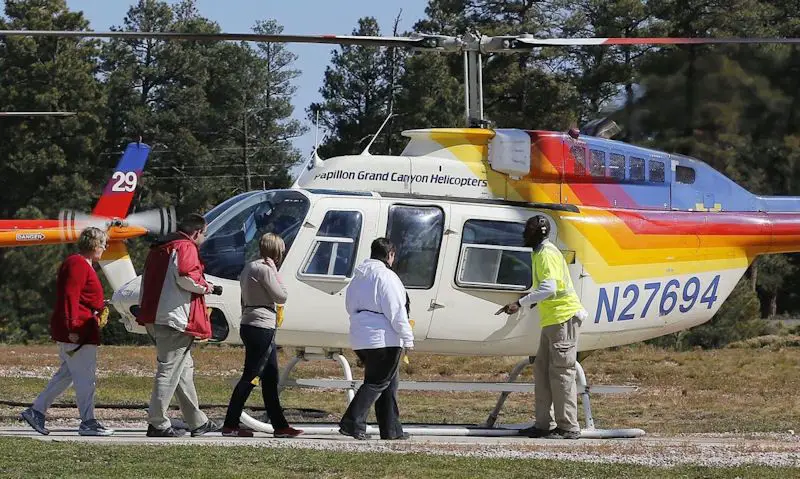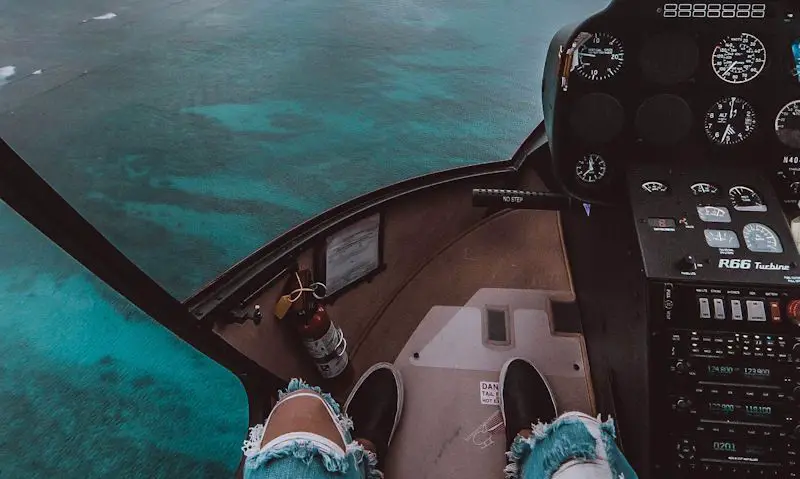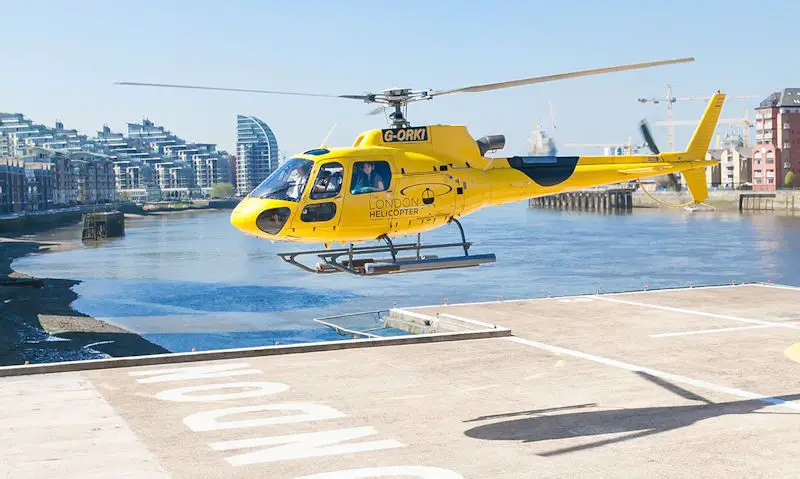What is the weight limit for a helicopter ride
If taking a helicopter ride with a big tour service, they usually operate a weight limit not exceeding 300lb, but in reality the weight limit is much less.
Ultimately, your weight will not want to exceed 242lb to guarantee to fly. Where a too close to call weight limit of 300lbs is suited to some helicopter tourism operators, but not to others. Weight of the passenger depends on the helicopter in use, but it also realises upon the company setting there own rules.
To guarantee a helicopter ride that will go ahead if over the weight limit, then do so using a reputable, well known helicopter tour company out of New York or the Grand Canyon.
There's no telling a passenger weight limit from the next; as it depends on who you are flying with, and what helicopter they are operating.
So while Airbus helicopters in use recommend a weight not exceeding 242lbs, they could also state not exceeding 300lb - or anywhere in between.
Well Bell have a more consistent weight limit of between 250lbs to 252lb, with the exception of a heavier load allowed for their newer models.
Where else you'll expect to be within the lightest weight limit stated is the Robinson R44.
Regardless, most operators state a weight limit that never matches up to the next, so be sure to contact them to be sure you're within there guidelines.
Maximum weight limit average
Inconsistency is ultimately apparent how helicopter tourism operators go about setting the maximum weight requirements per person.
So much so that its incredibly difficult to provide that exact number as its varies hugely between them all, wherever they are located in the world.
Having said that, the lowest weight requirement per person that I have calculated is just 242lb, 17.2st, or 109kg.
Well the heaviest passenger weight able to climb aboard a helicopter ride is measured at 300lbs, 21st or 136kg, respectively.
What that means is the average weight limit for a helicopter ride is 267lb, which I have taken from twelve helicopter operators who have made there weight limit rule public.
So therefore, if you don't want any trouble at the helicopter service at the customer weigh- in; you will want to make sure you don't exceed the lightest quoted limit, at 242lb, (17.2st).
Well you can often take a helicopter ride at an heavier weight, by up to 14 more pounds, its not a guarantee for all operators in the USA or anywhere around the world.
When weighing yourself at home while reaching close to the 300lb (21st), get a second weigh-in to be absolutely sure.
How is weight calculated
Wherever you maybe taking a helicopter tour in the world, a weigh-in will happen whether you have done it at home already, or expect the helicopter to do it for you.
To get an exact number without there being a chance of a miscalculation; its vital you weigh yourself to the system used by the service.
If you are in the USA for example, expect your weight to be taken in pounds, whereas in the UK it can be measured in stone.
Once you've got your most accurate weight, be sure to use a quick online weight conversion tool so you have your weight in pounds (st.), stone (st.) and kilograms (kg.).
Its not much use knowing your weight to let the operator know, this is only used so you can get a general idea of how heavy you actually are.
That way you can show up at the helicopter ride company in the confidence you will qualify for the ride.
If you exceed 242lb, or (17.2st), then the risk is high if you can fly or not.
People way below this weight will have no trouble at all. Having saying that, there is a minimum weight (as oppose to a maximum weight) for certain operators, but you shouldn't have to worry about that.
Customer weighed at check-in
Before you take a safety briefing when you arrive at the helicopter ride companies place of departure, its time for a customer weigh-in.
Don't be afraid at this point if you're concerned about your weight; its not made public or announced across the room at any time.
Passenger weight will be dotted down so the service can see where you'll be seated in the helicopter - known as weight and balances.
Accuracy is a higher possibility then weighing yourself at home, so expect the scales to be a little off, give or take a few pounds.
If you're no where near the weight limit previously stated, there will be no problems here.
When showing up to the helicopter offices while just weighing in under the maximum limit, that is not the end of it, as you have options at extra cost to you.
That's why its important you weigh yourself at home while going the extra mile to weigh yourself again at the pharmacy or supermarket - wherever a pubic scale may be.
If you're on the brink of coming in over the weight limit for the helicopter ride, then don't take carry on items, as they're measured too.
Belongings to be weighed
So you've arrived at the helicopter operators building well in the process of getting weighed before your flight.
If you don't know already, did you know all passengers must be weighed with there personal possessions they intend to bring on board the helicopter with them.
Now that does not include bags, purses, backpacks or similar items as they're not permitted; it relates to common things people bring on the helicopter, including:
- cell phone: will not be too much trouble as it only weighs a few pounds, so won't make a difference, though newer, larger smart phones can be heavy.
- DSLR camera: is as heavy as they come and will for sure add extra pounds onto your total weight at the weigh-in.
How all accessories are weighed-in will rely on you, the passenger to hold all items well you stand on the scales.
So pop the cell phone in your pocket, with the DSLR camera strapped on around your neck - just as it would be in flight.
Subscription glasses, sunglasses won't be any trouble so you probably won't be asked about them.
If you've come a little undressed, as in not put on a jacket yet; make sure you put it on so there's no issues when the operator realises.
Reasons you are weighed
In order for the helicopter to operate in a normal manner, the full load inside the cab will need to be considered.
Therefore, that's why all passengers must be weighed before they can proceed.
So while helicopters carry the pilot and a certain amount of other weighted items; all helicopters abide by a strict maximum lift capacity.
That would mean all passengers on board, from 3 to an upward 7 passengers must not exceed the total weight limit.
To be sure all passengers experience the best helicopter ride, the following applies:
- Maximum lift capacity: is related to what the helicopter type in use for the ride that requires the helicopter weight does not exceed a weight limit.
- Seat belt extender: if too overweight the operator will not be able to extend the seat belt around you, to fasten is safe and securely.
- Manufacturer's say so: much like the maximum lift, the manufacturer recommends passenger weight limit to the helicopter ride operator.
- Passenger comfort: if people board the helicopter are to overweight, then other passengers will be in discomfort as the person squashes the person next to them.
When it all comes down to it, it relies more on passenger safety; so if you're physically able to move in and out of the helicopter quickly, then people are more safe.
So if overweight, this can slow things down in regards to exiting the helicopter in a safe manner.
Cost applies if over weight limit
Unfortunately, for people who arrive at the weigh-in not knowing how much they weigh, they could be in for quite the shock.
Meaning you it cost you more as the operator charges those who exceed the recommended weight limit.
Its more to do with discouraging people who are overweight as to not fill up a helicopter with passenger numbers who will exceed the total weight limit.
That does not mean you will fly regardless, as certain tour operators have a policy of if exceeding the weight limit, you will be rejected.
On the otherhand, others will allow you to fly providing you're willing to wait as they find a helicopter that can take on your weight - meaning the current passenger weight total is quite low.
Last chance to fly with all other operators will require the purchase of a second seat.
Second seat is needed
So you unfortunately exceed the weight limit for the helicopter ride, and are not allowed to fly unless you book a second seat.
That will bring your seating arrangement to what is called a second a double seat that is an adjacent empty seat - meaning it is next to you.
It might not always be allowed as helicopters are already booked up as is; so that second seat might not be available for you to book.
If in the case you are given the option, it will go one of two ways.
The second seat will be treated like a full paying adult, so you'll need to pay again what you've already paid for yourself, or...
Helicopter operators are known to reduce the double seat for those who exceed the weight limit - something like $60 to 70$ - or more.
You'll be positioned in the helicopter to balance the helicopter, so expect the two middle seats if they are available, but never the co-pilot seat.
Weight & Balances apply
Most of the world's helicopter ride services operate what is known as a strict weight and balances rule.
What that means is the extra weight caused by passengers inside the helicopter must be distributed eventually to steady the helicopter in flight.
If the helicopter is too heavy on either side, the pilot will need to over correct the cyclic and peddle to level it out, or prevent drifting.
If that was ever a possibility, never expect the helicopter ride to go ahead as the pilot will land and the flight could be canceled.
General rule of thumb when it comes to weighing people is knowing where they can sit.
If all passengers weighed-in around the same weight; then its possible the operator won't mind where you sit - but that's never the case, is it.
So as there will be heavy and lighter people on board, all passengers will have to be arranged to satisfy the weight and balances rule.
That could mean you don't end up sitting next to your companion, or you don't get to sit in the co-pilot seat.
Conclusion
What the weight limit is for a helicopter ride that will guarantee all passengers will be able to fly, is not weighing over 242lb, 17.2st, or 109kg.
That is the average weight taken from the helicopters operators weight limit policy, so it is possible to weigh heavier with other services.
It is thought the maximum weight limit for a helicopter ride is 300lbs, 21st or 136kg - but it really depends on the helicopter in use.
More so, helicopter tourism services have there own rules that don't often follow the same rule book - so its hard to pin point the exact weight limit for a passenger.
If weighing yourself at home, do so while using an online weight conversion tool so you know your weight in pounds, stone and kilograms.
Wherever you are in the world, weight is taking differently; so while it might seem you're within the limit, it might just mean you weighed yourself in kilograms, but what you should of done is take your weight in pounds - which would be a higher number.
All people to be checked in will be weighed all while carrying the items they intend on bringing on board the helicopter, such as photography equipment.
If you do exceed the weight limit, then it could come at a cost to you. You might need to pay for a second seat, or your flight will be canceled - often with a no refund.



